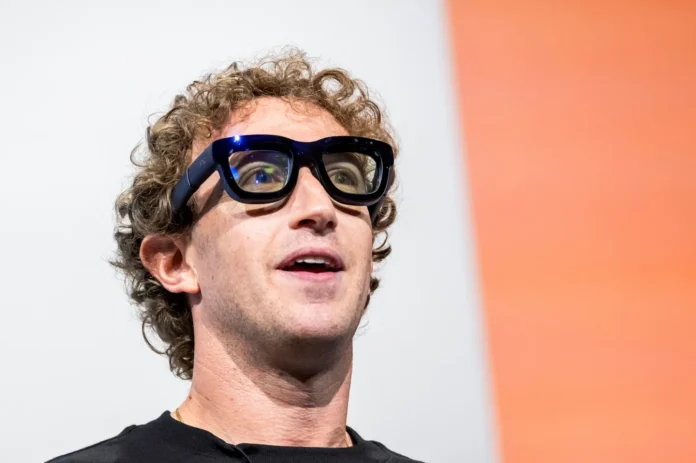The Big Vision That Still Hasn’t Landed
Back in 2014, Mark Zuckerberg made one of the boldest bets of his career. He didn’t just see a future filled with social media feeds and Instagram filters—he pictured a world where millions of people would slip on sleek glasses or headsets and step into entirely new digital spaces. These wouldn’t just be games or gimmicks. They’d be places to work, to learn, to relax with friends, maybe even to attend the office without leaving the couch.
That vision—what Zuckerberg branded the “metaverse” has cost Meta tens of billions of dollars so far. And here we are, a decade later, still asking: has it paid off?
The short answer: not yet. But Meta isn’t slowing down. In fact, the company is doubling down again this week with the expected launch of new AI-powered smart glasses at its annual developer conference.
Why Glasses Matter More Than Headsets
If you’ve ever tried on one of Meta’s VR headsets like the Oculus Quest 2 or the newer Quest Pro, you know the thrill of it. The sense of immersion is real. But so are the downsides. They’re bulky, awkward to wear in public, and let’s be honest, most people don’t want to strap a headset to their face for hours.
That’s where glasses come in. They’re lighter, easier to wear, and socially acceptable in a way headsets just aren’t. Glasses could be the bridge between today’s clunky VR and tomorrow’s seamless AR world.
Think about it: would you rather take a video call with goggles on your head, or with glasses that look almost normal? Meta knows the answer—and that’s why it’s betting big on this next step.
Billions Spent, But Where’s the Payoff?
Meta has poured more than $50 billion into Reality Labs, the division behind its metaverse efforts. To put that in perspective, that’s more than some countries’ GDP. Yet so far, none of Meta’s VR devices have broken through to mainstream success.
The Quest 2 did sell millions of units, but it’s still more of a gamer’s toy than an everyday tool. Horizon Worlds—the virtual social platform Zuckerberg hyped—struggled to attract and retain users. Even employees sometimes joked that it felt empty.
So the big question is: can smart glasses finally turn this around?
A Shift from Metaverse to AI-verse
Here’s something interesting: Meta isn’t just talking about “the metaverse” anymore. Over the past year, the company has shifted its messaging heavily toward AI. Chatbots, image generators, AI assistants—they’ve all become part of Meta’s ecosystem.
The new smart glasses are expected to reflect that. Instead of trying to drop you into a cartoonish 3D office, they’ll likely focus on more practical features: AI assistants you can talk to, real-time translation, maybe even an AI coach whispering in your ear during a meeting.
In other words, Meta seems to have realized that the path to the metaverse might not be a straight line. Instead, it could arrive in stages—first smart glasses with useful AI features, then more immersive AR, and eventually a true digital-physical blend.
Why Zuckerberg Won’t Let Go
It would be easy for Meta to cut its losses. Investors have complained for years about the billions burned with little return. Competitors like Apple and Microsoft have cooled their consumer VR ambitions.
So why does Zuckerberg keep pushing?
Partly because he sees it as existential. Facebook and Instagram are powerful now, but what happens if the next big platform shift—like AR glasses—comes from Apple or another rival? Meta would risk becoming just another app on someone else’s platform, instead of controlling the platform itself.
Zuckerberg doesn’t just want to be on the next platform. He wants to own it.
The Stakes in 2025
The timing is critical. Apple’s Vision Pro headset, despite its $3,500 price tag, has drawn plenty of attention. Google is reportedly rethinking its own AR efforts. Startups are experimenting too. If Meta can deliver glasses that are lightweight, stylish, and genuinely useful, it could gain a head start.
But if this launch falls flat? The narrative of “Zuckerberg’s metaverse gamble” being a money pit will only grow louder.
What This Means for Everyday People
Here’s where it gets real. If Meta pulls this off, it could change the way we handle daily life:
-
Work: Imagine getting Slack messages or calendar reminders in your field of vision without pulling out your phone.
-
Learning: Students could overlay digital diagrams on real-world objects during class.
-
Communication: Instead of staring at your phone, you might see a friend’s translation pop up instantly during a conversation.
-
Entertainment: Watching sports or concerts could come with real-time stats and interactions, right in your glasses.
This isn’t sci-fi anymore. The tech is almost here. The only question is whether Meta can deliver it in a way people actually want to use.
My Take: Why This Still Matters
I’ll be honest I’ve been skeptical of the metaverse hype. I remember testing an early VR demo years ago and thinking, “Cool, but I’d never wear this daily.” Yet the glasses angle feels different.
What stands out is that Meta seems to be pivoting from “forcing people into a virtual world” toward “adding digital layers to the real one.” That’s a shift that could make all the difference.
Here’s what this really means: Meta might finally be finding the middle ground between vision and reality. If it succeeds, the way we use technology in daily life—how we work, talk, even relax—could change faster than most of us expect. If it fails, well, Zuckerberg’s metaverse dream might remain just that: a dream.
Either way, this launch is worth watching closely. Because if glasses are the next smartphone, whoever gets them right won’t just win big—they’ll own the future of computing.

